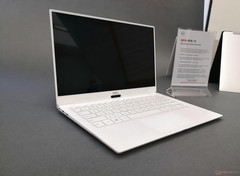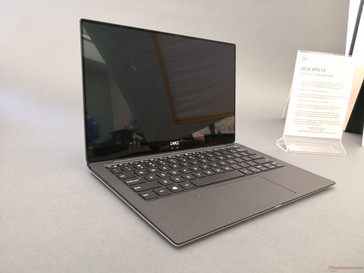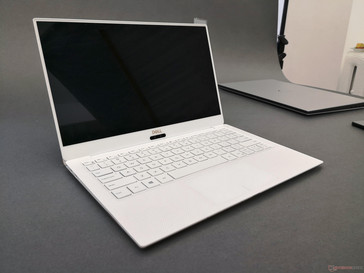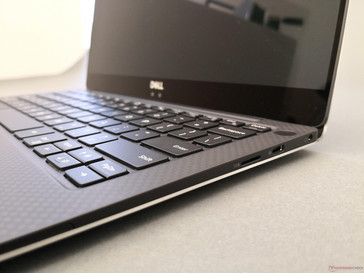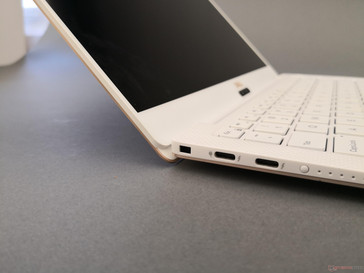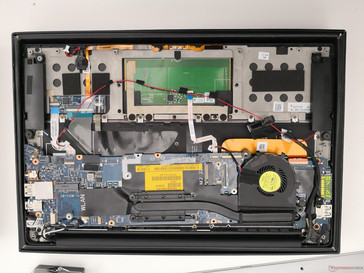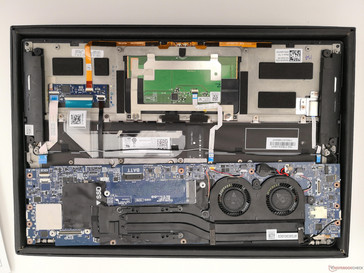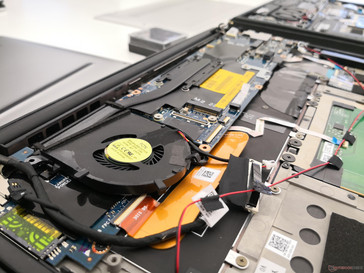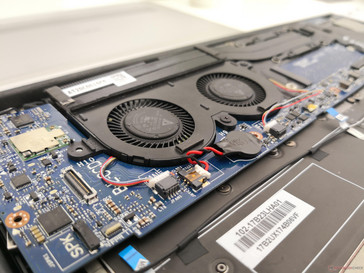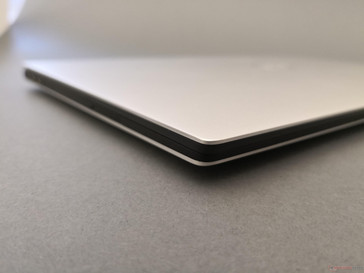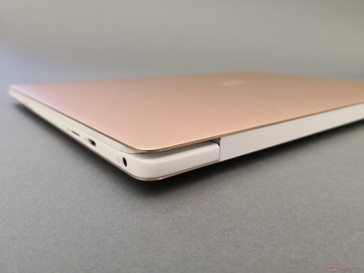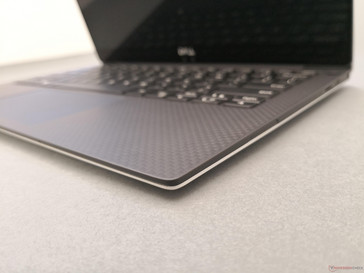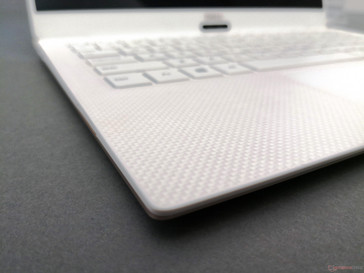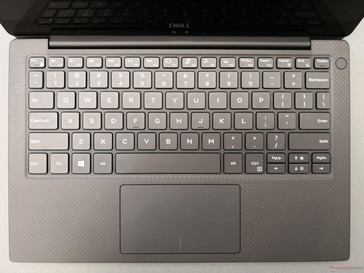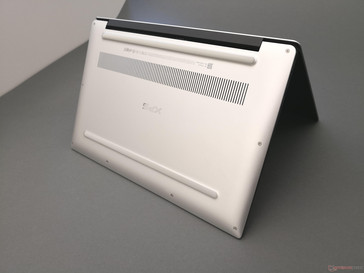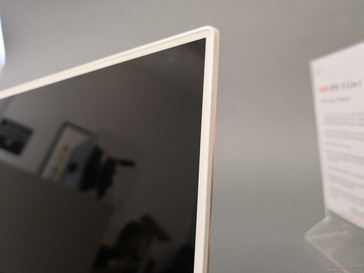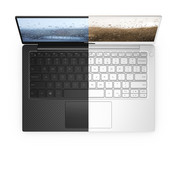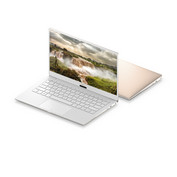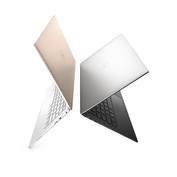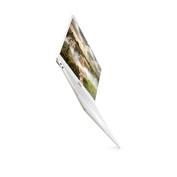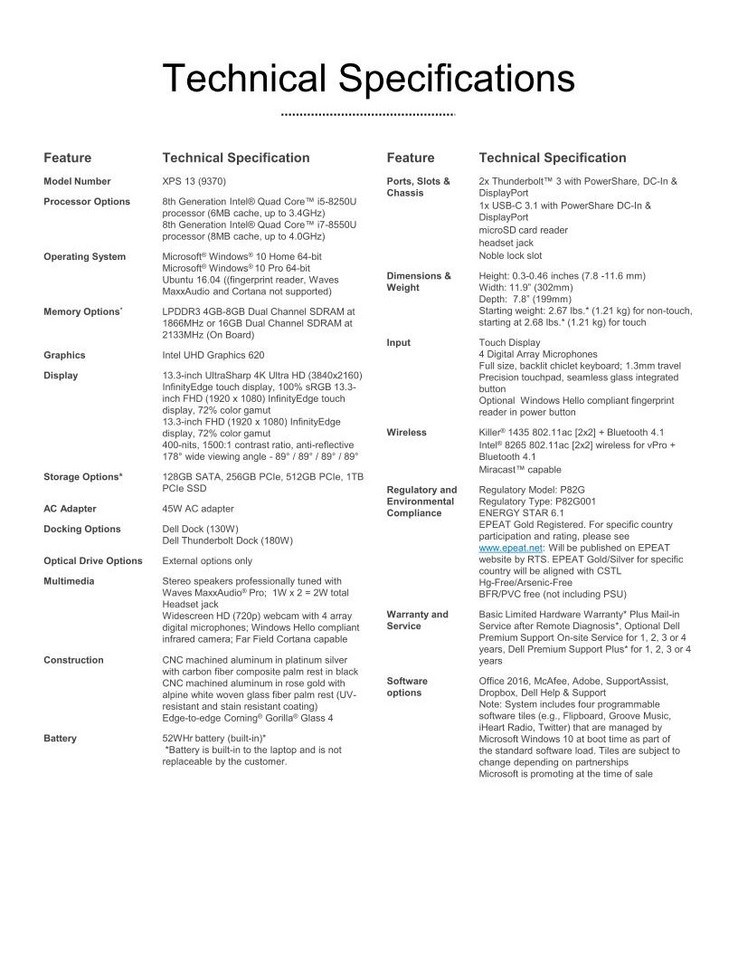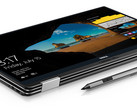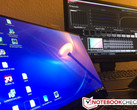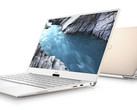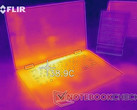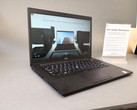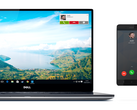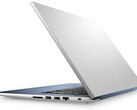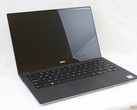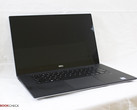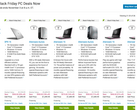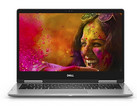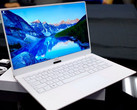The current InfinityEdge design may be over three years old, but it arguably remains as one of the best narrow bezel designs available in balancing rigidity, serviceability, and appearance. As lauded as it may be, Dell has decided to refresh its flagship poster child for 2018 in an attempt to stay ahead of the curve and what better time to show this off than at the Consumer Electronics Show in Las Vegas.
A brief rundown of the differences between the new XPS 13 9370 and outgoing XPS 13 9360 is outlined through the table below. Nonetheless, we will go through the major changes one by one including the obvious superficial updates.
| Dell XPS 13 9370 | Dell XPS 13 9360 | |
|---|---|---|
| CPU | Intel Core i7-8550U, i5-8250U | Intel Core i7-8550U, 7100U, 7200U |
| GPU | Integrated UHD Graphics 620 | Integrated HD or UHD Graphics 620 |
| Display | 13.3-inch FHD touch or non-touch 72% NTSC, 4K UHD touch 100% NTSC (400 nits, 1500:1 contrast) | 13.3-inch FHD non-touch, QHD+ touch |
| RAM | 4 GB to 16 GB LPDDR3 1866 or 2133 MHz, Soldered | 4 GB to 16 GB LPDDR3 1866 MHz, Soldered |
| Storage | 128 GB SATA to 1 TB PCIe SSD | 128 GB SATA to 256 GB PCIe SSD |
| Connectivity | 2x USB Type-C + Thunderbolt 3 (40 Gbps each), 1x USB Type-C Gen. 2, MicroSD reader, 3.5 mm headset, Noble Lock | 2x USB 3.0 Type-A, 1x USB Type-C + Thunderbolt 3 (20 Gbps), 1x USB Type-C Gen. 2, HDMI, SD reader, 3.5 mm combo audio, Noble Lock |
| Wireless | Killer 1435 or Intel 8265 | Killer 1535 |
| Battery | 52 Wh | 60 Wh |
| Dimensions | 302 x 199 x 11.6 mm | 304 x 200 x 15 mm |
| Weight | Starting at 1.21 kg | Starting at 1.2 kg |
The first notable update is to the display itself. Both FHD touch and non-touch options are now available alongside a 4K UHD (3840 x 2160) touchscreen that promises to cover the full sRGB spectrum. The uncommon QHD+ (3200 x 1800) panel on the XPS 9360 is not returning for the new iteration. The move is likely a response to the 13.3-inch Spectre 13 and 13.9-inch Yoga 920 as both competitors ship with FHD and 4K UHD panels only. It will be interesting to find out what the response times are for the 4K UHD SKU compared to the FHD SKU since they tend to be slower at higher native resolutions.
The next major internal change is to the Thunderbolt 3 ports themselves. There are now two Thunderbolt 3 ports with 4x PCIe lanes each compared to the single throttled Thunderbolt port 3 on the outgoing XPS 13 and current XPS 15 9560. The update is unlikely to affect most users, but enthusiasts will be at ease knowing that Thunderbolt 3-based docking stations and eGPU solutions can exploit the full 40 Gbps bandwidth of the XPS system. The drawback is the overt lack of any USB Type-A ports not unlike on the rumored 15.6-inch XPS convertible, but Dell is throwing in a free USB Type-C to Type-A adapter in every box to make up for the omission.
Internally, Dell is sourcing both Intel and Killer for multiple WLAN configurations while cutting battery capacity by 10 percent from 60 Wh to 52 Wh. The WLAN change should appease users who may have been having issues with Killer in the past, but the smaller battery was likely a necessity because of the thinner design. Despite this, the manufacturer is still promising a battery life of almost 20 hours from a full charge. The new design even doubles the number of fans and heat pipes for what we can only hope will lead to quieter fan noise and cooler temperatures. While there are no manual fan controls to adjust RPM directly, there are a number of new preset options optimized for specific conditions such as video playback, gaming, or word processing.
Visually, the new XPS 13 9370 is flatter around the edges and sharper around the corners than the outgoing XPS 13 9360. The signature InfinityEdge bezel is now even narrower from 5.2 mm to about 4.5 mm for a more impactful "bezel-free" experience, although the thickness of the lid feels thinner than on the older XPS 13 design. Dell says the keyboard experience should be identical between the two generations including the shallow 1.2 mm key travel. We would've preferred deeper keys with improved feedback a la the Spectre x360 15, but at least we know that tactile feedback will not suffer as a result from the thinner form factor.
Finally, the new Rose Gold option throws in a couple of curveballs unique to its color palette. In order to accommodate the new white palm rests and key caps, the keyboard backlight is now a blue-green tint not unlike on the current Samsung Notebook 9 series whereas the standard black XPS 13 option will continue to have the familiar white backlight. Furthermore, the white palm rests are now glass fiber instead of carbon fiber with a bumpier surface texture to repel grease buildup on what would have otherwise been a smooth white surface. Dell is contrasting this to Microsoft's white Alcantara keyboards on the Surface Laptop and Surface Pro that are notorious for becoming dark and grimy over time.
One particular drawback that we've been consistently pointing out on the older XPS 13 model is its very warm surface temperatures. Dell has apparently heard our cries as the new XPS 13 incorporates special gel insulators from GORE Technologies to keep surface temperatures in check. This same company is responsible for producing polytetrafluoroethylene (ePTFE) and other fibers found in applications where heat resistance and tensile strength are concerns.
Has build quality improved even though the XPS 9370 is 23 percent thinner? The results are a mixed bag based on our short time with the showcase unit. The lid feels a bit more flexible than on the outgoing XPS 9360 possibly due to the narrower bezel and seemingly thinner outer lid reinforcement. We suspect that the matte FHD SKU - of which none were on show - is even worse as it does not have the glass overlay to strengthen an already super-thin design. On the bright side, the base does not appear to be appreciably inferior in rigidity to the outgoing model. Depressions are minimal down the center of the keyboard and the front corners exhibit only minor creaking when attempting to twist the base. We'll reserve our final thoughts on the chassis once we have a full review of the unit.
The XPS 13 9370 is launching today in North America for a starting price of just $1000 USD or $950 USD for the Ubuntu Developer Edition. Expect our full review on a unit in the coming weeks.
Source(s)
Dell




